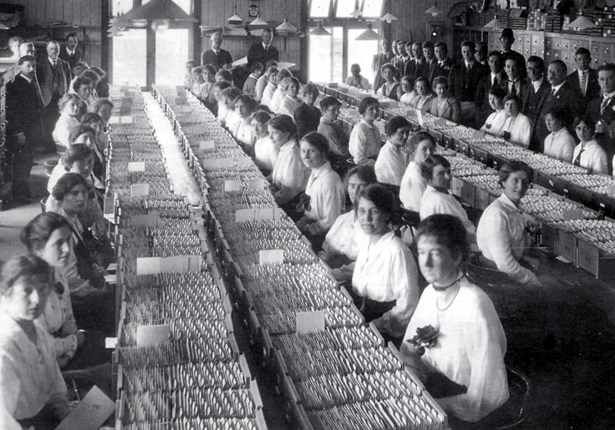
The New Zealand public service played a central part in New Zealand’s war effort, both at home and overseas. NZHistory has produced a series of seven articles exploring this history commissioned by the State Services Commission, and two further articles on New Zealand’s wartime postal and railway services.
In 1914 the public service employed some 33,000 permanent employees across 42 government departments, which ranged in size from a handful of office staff in Wellington to 14,000 employees around the country
It was a modern bureaucracy managed by a public service commissioner, visible across the country through its schools, police stations, post offices, and local departmental offices. It placed particular emphasis on building New Zealand’s agricultural sector and infrastructure, and monitoring industry in the interests of building a reputable New Zealand export brand and minimising sectoral strife
When war broke out in 1914, the public service was tasked with carrying out the government’s wartime programme. Foremost were the recruitment, training, and – from late 1916 – conscription of men for military service, and organising the shipping of ‘commandeered’ New Zealand produce to Britain to feed soldiers and civilians.
Some staff from the Railways and Post and Telegraph departments served in specialist units within the New Zealand Expeditionary Force.
The police were responsible for social control in a restrictive wartime climate. They monitored enemy aliens, clamped down on sedition and pursued those who tried to escape conscription. Defence and Post and Telegraph censored the mail and the press.
Wartime financial constraints, along with large-scale enlistment by public servants, left government departments seriously depleted and struggling to maintain public services. Departments cut back on non-essential work and services and focused their efforts on keeping the military machine operating. They turned increasingly to female staff.
The public service slowly returned to full strength in the years following the armistice. The Repatriation Department co-ordinated the government’s efforts to absorb ex-soldiers back into civilian life at the end of the war, through training schemes, medical care, and its soldier settler scheme.
Government departments commemorated their fallen in print and in memorials across the country.
Most of the articles in this series were commissioned by the State Services Commission and New Zealand Post.
